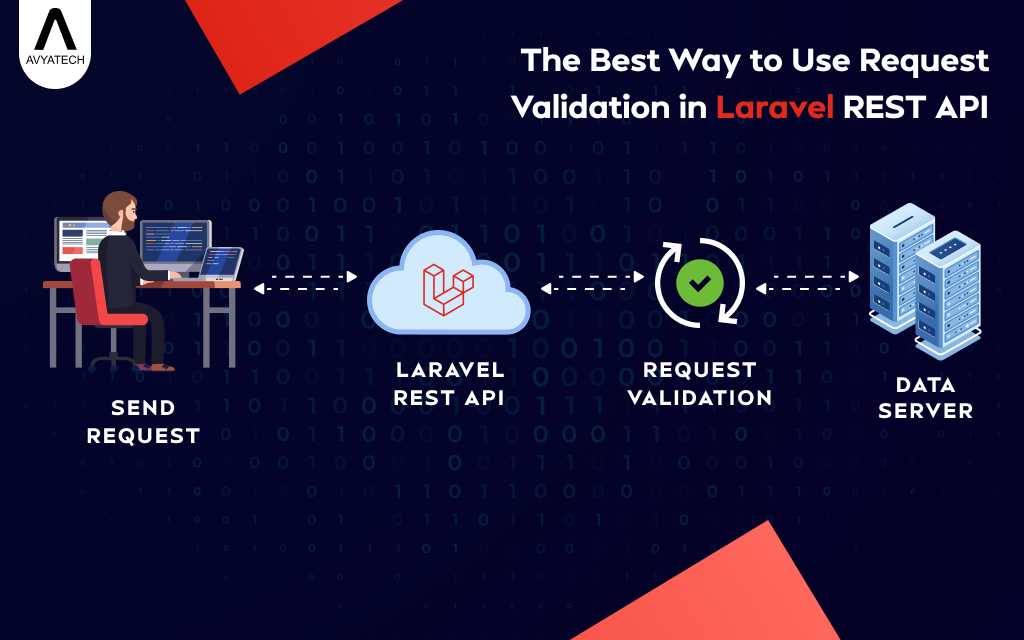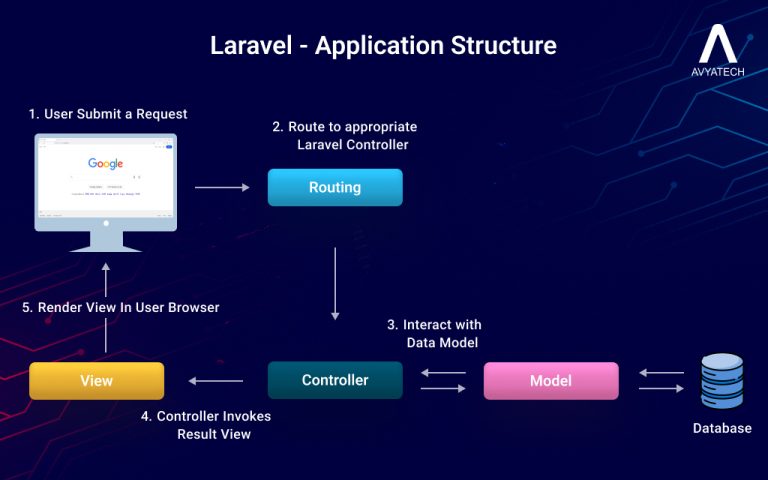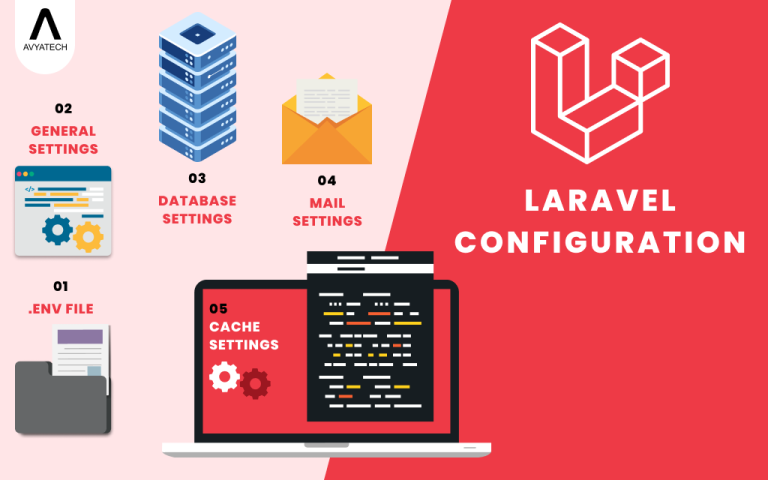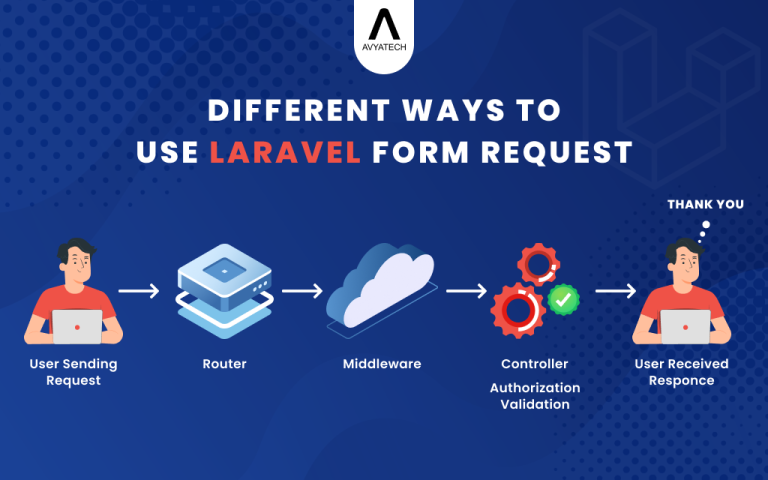Web applications use APIs for database operations. Laravel framework also offers API features. For data security and correctness, it is mandatory to have Laravel REST API validated. Laravel request validation matters the most to manage incoming data safely and accurately before actual data processing gets started. This validation check adds a protection layer and saves data from malicious purposes and security vulnerabilities.
For example, you run an online store and buyers/customers place an order by filling out a form. Here, it is vital to have the right information, such as a valid phone number, address, and email. Laravel custom validation helps you with this by providing request validation.
Developers can use sanitisers and repopulate forms to use request validation in Laravel. Manual efforts, Laravel Form Request Validation, Validator Class, and ValidatesRequests trait are some better ways to validate data.
What is Request Validation?
In simple terms, request validation is like having a “security guard” for your forms and data. Validation is pivotal for improving security, preventing incorrect data from being stored, and ensuring correct artisan command input and client and server-side validation.
Laravel ensures the data meets all pre-defined conditions and fixed rules by checking it when a form is submitted. It stops the request in case of wrong and insufficient data. Then, it sends back an error message to the user so that he or she can fix the issue.
Handling validation errors in Laravel
How Validation Works in Laravel?
Defining validation rules and validating requests are two prominent ways to confirm validation works in Laravel.
Define Laravel Validation Rules:
You tell Laravel what kind of data you expect using validation rules. For example: “The password should be at least 8 characters long” or “The email field needs a valid email address.”
Validate the Request:
Laravel will then check the data submitted by the user against those rules. If it is correct, the request is processed further (like saving the data). If it is incorrect, Laravel will stop the request and send error messages to the user.
Example of Basic Validation:
Users need to submit their name, email, and password through a form. You want to make sure:
- The name is required.
- The email must be valid.
- The password should be at least 8 characters long.
Here’s how you might handle this in Laravel:
public function store(Request $request)
{
$validatedData = $request->validate([
'name' => 'required',
'email' => 'required|email',
'password' => 'required|min:8',
]);
// If validation passes, save the data
// Your logic to save the data (e.g., create a new user)
}Here, required means the field must not be empty. email checks if it’s a valid email address. min:8 means the password must have at least 8 characters. If the user submits invalid data, Laravel will automatically send back error messages explaining what went wrong.
How to Use Validation in a Laravel REST API?
REST API validation becomes important because users are sending data through API requests (instead of a form). The best way to use validation in a Laravel API is similar to the Form example, but it happens behind the scenes when the API receives the request. Steps for validating in a REST API:
Define Validation Rules:
Like before, you define what kind of data you expect in the API request.
Use validate Method:
You can use Laravel’s validate method to check the request data in your API controller.
Send a JSON Error Response:
If the data fails validation, Laravel will automatically return a JSON response with error messages instead of a webpage.
Example in an API:
Let’s say your API endpoint allows users to register with their name, email, and password. You can validate it like this:
public function register(Request $request)
{
$validatedData = $request->validate([
'name' => 'required|string|max:255',
'email' => 'required|email|unique:users,email',
'password' => 'required|string|min:8',
]);
// If validation passes, you can create the new user
$user = User::create([
'name' => $validatedData['name'],
'email' => $validatedData['email'],
'password' => bcrypt($validatedData['password']),
]);
// Return success response
return response()->json(['message' => 'User registered successfully'], 201);
}We define rules for name, email, and password.
unique:users,email means the email must be unique (no other user should have the same email).
If the validation fails, Laravel automatically sends a JSON response back to the client with error messages.
If the validation passes, the new user is created, and a success message is returned.
Key Points for API Validation:
Use the validate() method inside your controller to check the request data. Laravel automatically handles error messages for invalid data and sends them back as JSON. Always validate user inputs to prevent bad data from entering your system.
Example JSON Error Response:
If the user sends an invalid email, Laravel would return something like this:
{
"message": "The given data was invalid.",
"errors": {
"email": ["The email must be a valid email address."]
}
}This tells the user exactly what went wrong, making it easier for them to fix their mistake.
Laravel validation best practices
Clean, maintainable codes are vital for long-term success in Laravel development. Here, form validation matters the most. Validation logic can be scattered through controller methods. It may lead developers to a situation where they find it difficult to maintain the code. Consequently, it may lead to reduced readability, code duplication, and limited reusability.
When developers transition to the best practices of Laravel validation, they overcome multiple challenges easily. Through Request classes, Laravel captures validation logic and produces more maintainable and cleaner code. Stick to the following three practices when it comes to increasing development workflow.
Defining validation rules with request classes to make expressive and maintainable code.
Testing for confidence to ensure validation rules function as per expectations and validation logic is correct.
Integration with controllers to improve code clarity and maintainability.
Summing up
Laravel request validation ensures the data you get from users is correct. It automatically checks the data and sends back helpful error messages. In REST APIs, validation is handled the same way but with JSON error responses. By following these steps, you can ensure that your Laravel API only accepts clean, valid data, making it more secure and reliable! Using API request validation regarding Laravel API development, data protection reaches to the next level.







